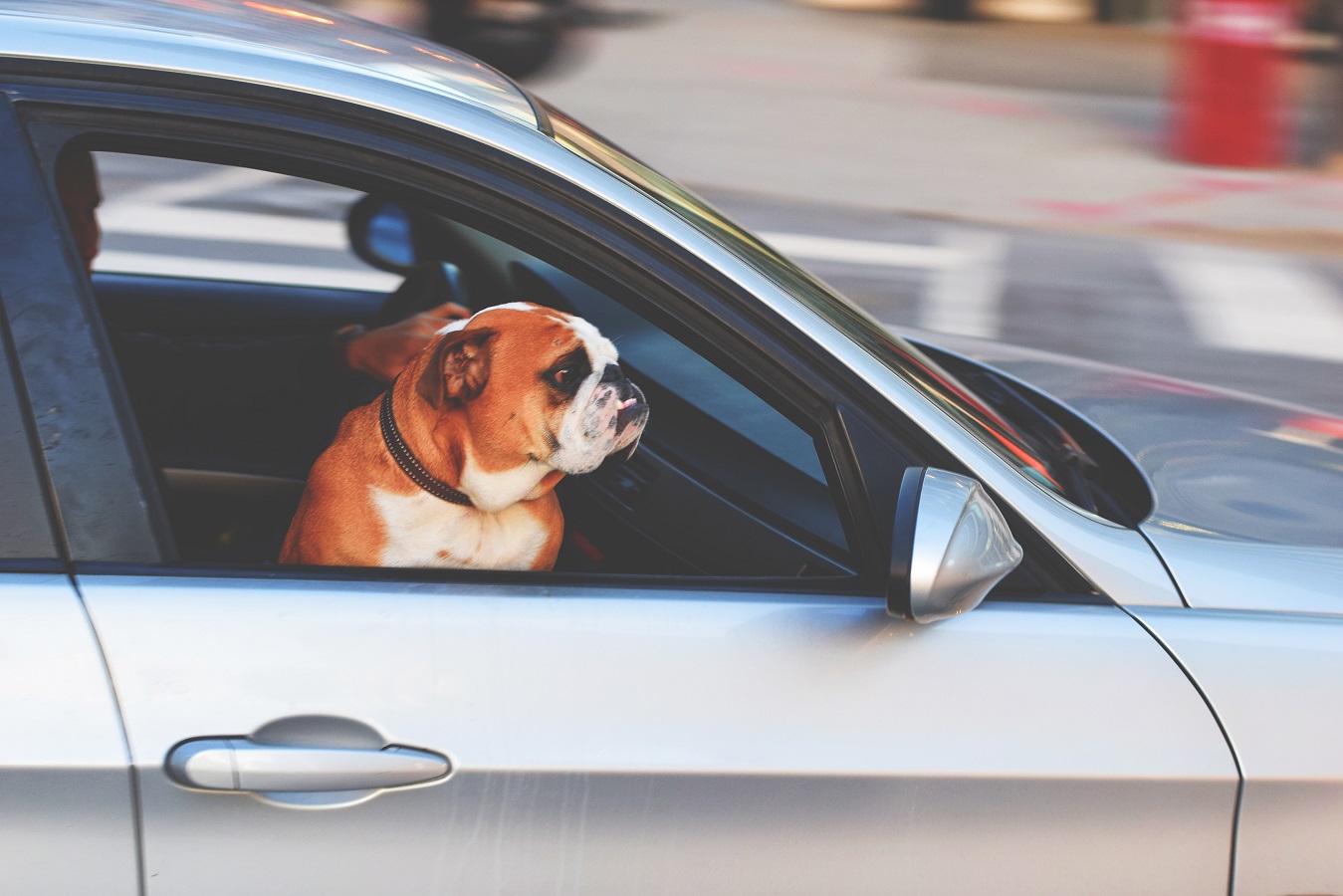Car Anxiety: Prepping Your Pet for a Road Trip

If you plan on hitting the open road this summer, why not take your pet along? A road trip can be the perfect opportunity for some one-on-one bonding time with your best friend. But, if traveling makes her anxious, you will first need to acclimate her to the car. Whether or not a road trip is on your agenda, help your pet become more comfortable with car rides and reduce her anxiety for vacation or routine travel.
Take your pet on practice rides
Use counter-conditioning principles to help your pet form positive associations with car rides. Start small—offer treats to encourage her to get into the car, and then pet and praise her when she jumps in. Repeat the drill several times without starting the car, then work up to a short ride. If she tolerates that well, progress to longer rides, rewarding her with treats and attention to enforce the idea that car rides are fun, not scary. You may also consider taking your pet on car rides to “fun” places, like the dog park or on a puppy play date with another dog. Your pet will dictate how quickly you progress—if she is fearful and anxious, move slowly from one step to the next, while you can advance more quickly if she is a natural traveler. Ensure your pet is comfortable with each step before progressing to the next.
Some pets require intensive therapy or medication to overcome car anxiety. If positive conditioning does not alleviate your pet’s fear, ask your family veterinarian for recommendations.
Try calming products to reduce your pet’s anxiety
Many products, such as pheromone collars, sprays, and wipes that contain calming hormones naturally made by dogs and cats, can help calm anxious pets and reduce stress. A pressure vest, such as a ThunderShirt®, applies gentle, constant pressure similar to swaddling an infant, and can significantly reduce anxiety during car rides. Try these products during your practice rides to see if they make your furry friend more comfortable.
Pet travel safety
Just as you must wear a seat belt, your pet needs to be safely restrained in the car. A pet who is loose and roaming around the vehicle is a dangerous distraction and could be seriously injured if the car stops quickly or is involved in an accident. Dogs can be confined to a crate large enough for them to turn around and lie down comfortably, or they can ride safely in the back seat using a harness that attaches to the seat belt buckle. Cats should ride in a crate roomy enough to accommodate a litter box to avoid messy accidents.
It can be fun for dogs to stick their noses or heads out the window during a car ride, but unfortunately, this can also lead to serious injury and even death. Veterinary emergency hospitals all over the country see countless injuries after pets jump out windows while a car is in motion (or even when stopped). Pets can sometimes even wriggle their way through cracked windows, so make sure to keep the window tightly closed during car trips. Additionally, it is never a good idea to allow your pet to ride in the bed of a truck (even in a crate) on hot or cold days. It is particularly dangerous to allow your pet in the bed of a truck outside of a crate. Even if a dog is restrained with a leash, the truck bed is never a safe place to ride.
Microchipping your pet
Pets may slip away during car trips when in unfamiliar surroundings, so ask your veterinarian to implant a microchip to increase the likelihood of her safe return if the unthinkable happens and she gets lost.
Microchip implantation is a quick, simple procedure that can be performed during a routine veterinary office visit. The microchip is placed in the tissue between your pet’s shoulder blades, where it will remain for the rest of her life. After placement, you must register the microchip with your contact information so your beloved companion can be safely returned to you if she gets away. Always keep the contact information up-to-date.
Leash training your dog
Your pooch must be leash trained before she travels, because she will need to be walked on a leash for bathroom breaks to be safe at busy rest stops. If your pet does not normally wear a collar, purchase a sturdy leather or nylon version and add an identification tag with your contact information. Leave the tag on your pet at all times to get her used to wearing it—you’ll be thankful for the added reassurance if she unexpectedly wanders away.
Once your pet is comfortable with the collar, attach a leash and go on a short walk. Keep your pet by your side, giving her only a short amount of leash. Begin walking slowly, saying “heel” as you do. If she tries to pull ahead, gently pull her back beside you and repeat the command.
Gather your pet’s travel supplies
As the big trip approaches, assemble the supplies your pet will need, which should include:
- A crate or travel harness
- A leash
- A litter box and litter for cats, or waste bags for dogs
- Food and water bowls
- A gallon jug filled with fresh water
- Enough food for the entire trip
- Medications your pet will need during the trip
- A pet first-aid kit
Are you ready to plan a road trip with your furry pal? If you have questions, ask your family veterinarian, or call our team at 713-693-1111.
